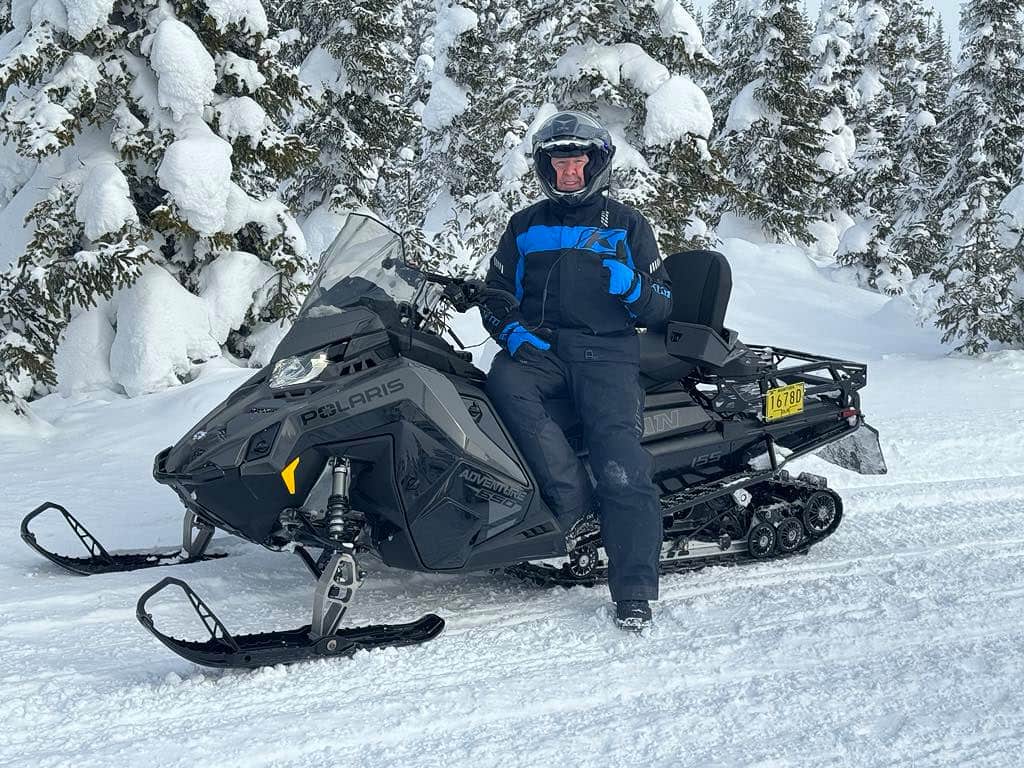Table of contents
ToggleThis season has been marked by unpredictable weather conditions. Today, I’m bringing you the third part of the test of the new version of the Polaris 650 TITAN Adventure. After assessing its utility capabilities and trail behaviour, the heavy snowfalls in February in the Monts-Valin gave me the perfect playground.
As mentioned in my previous articles, it’s rare for a snowmobile to perform well in all three types of use. However, for buyers of 20-in.-track snowmobiles, the ability to handle deep snow is essential, as they often venture off the beaten path.
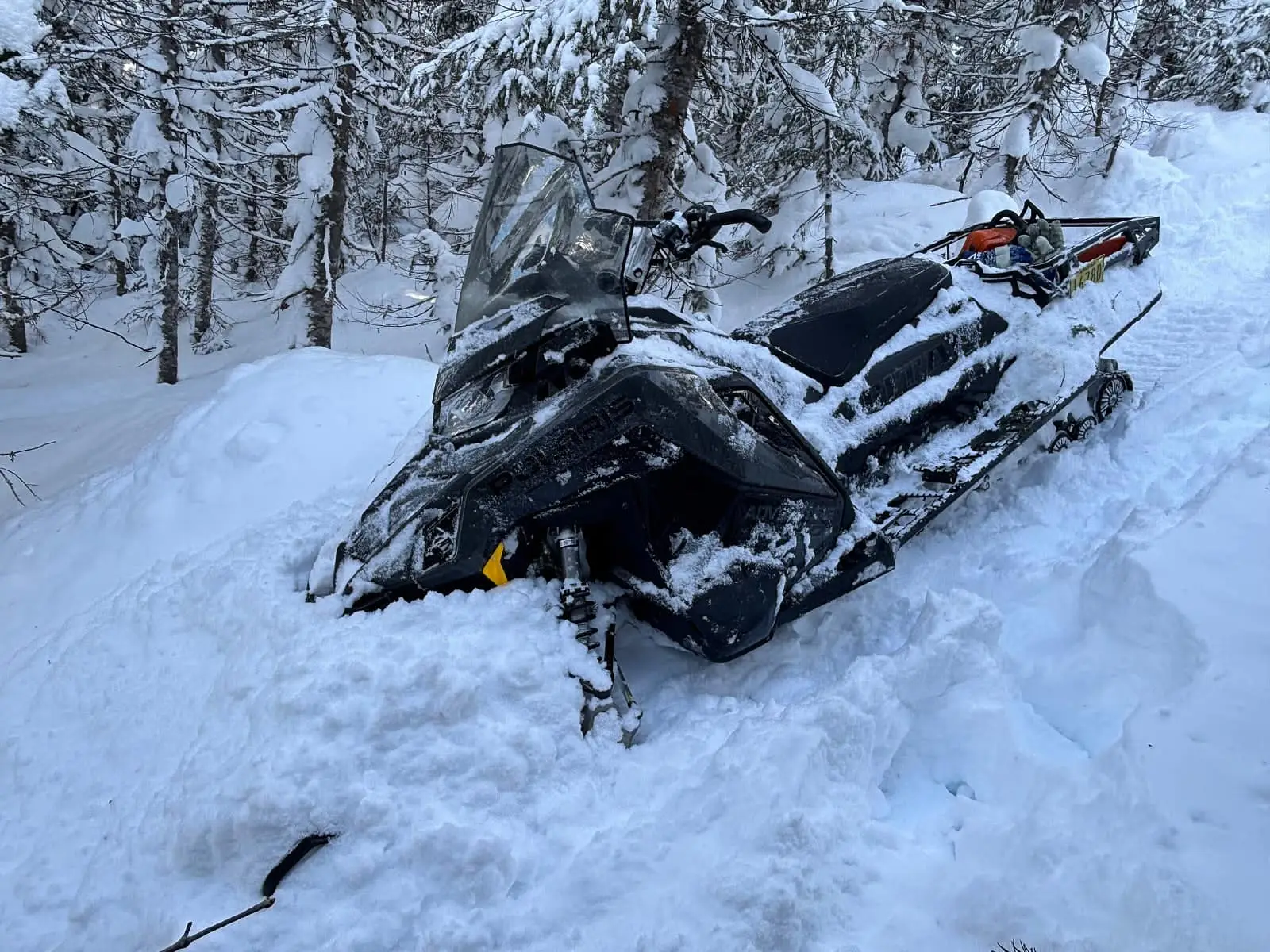
Whether it’s to reach a cabin or simply have fun in the mountains, these enthusiasts have high expectations—and so do I. During my patrols, it’s not uncommon to encounter a thick snowpack of 6, 8 or even 10 feet on the ground. Sure, some layers are hardened, but you often end up breaking through and plunging into a real “white hell”… and that’s exactly what I’m looking for!
Near-Perfect Balance
I’ve been riding Widetrack snowmobiles for over 30 years and quickly learned that weight distribution is a key factor in deep snow. From the design stage, poor balance can compromise a snowmobile’s off-trail performance, especially if the front end is too heavy.
The new generation of the TITAN perfectly illustrates what a snowmobile in this segment should be. Thanks to the adoption of the Matryx chassis, as soon as you accelerate in deep snow, the front end lifts and the weight is transferred to the track. Suspension adjustment plays a role, but it can’t compensate for poor mass distribution.

On the new TITAN Adventure, traction is impressive and the track doesn’t spin out, as weight transfer is instantaneous. This advantage also applies in reverse. If there’s too much weight on the front end, the sled has to pull a heavy load, which creates drag. On the TITAN Adventure, that drag is minimal, making it easier to back up in deep snow.
The built-in tilt of the rear BackTrak suspension is also a strong point—both for backing up and moving forward in deep snow. In reverse, it tilts even more to ride up over the snow. In forward motion, that same tilt enhances weight transfer and helps lift the front end.
The DNA of an RMK
I spent a lot of time in the woods with the TITAN Adventure. I have to admit I was impressed by its manoeuvrability in tight spots. But it also shines in open terrain, where its ride feels similar to that of a mountain sled.
I was quickly surprised by its responsiveness. By simply applying pressure on the running boards in powder, you can change direction effortlessly. As soon as the rider shifts their weight, the TITAN Adventure responds immediately. In my opinion, its handling is reminiscent of an RMK. That’s yet more proof that its 667 lb are very well distributed.
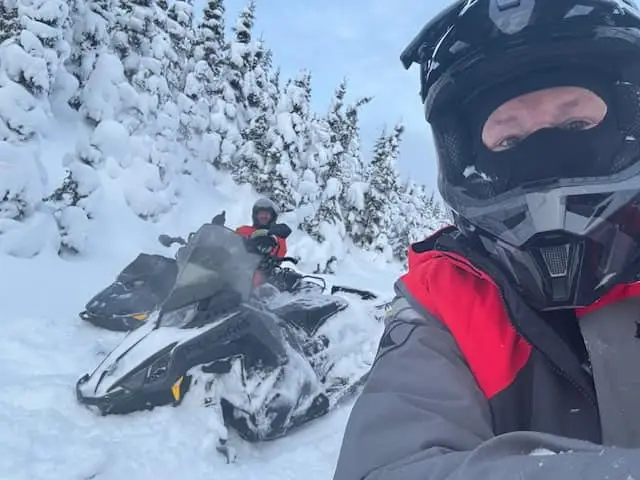
I even had fun doing a few doughnuts on snowy lakes. With well-controlled counter-steering, the snowmobile handles with agility. I pushed its limits on steep, tight climbs, and the chassis responded with surprising quickness. However, in very steep sidehill positions, the wider front panels increase drag, which slows the sled and reduces traction.
The 1.8-in. Cobra track performs well by offering a good grip in deep snow. While I really like the Patriot 650 engine, a bit more power wouldn’t hurt in these conditions. If you’re primarily planning this type of riding, the Patriot 850, expected for 2026, might be a better choice. But for everything else, the 135 hp of my machine are more than enough.
A Few Minor Adjustments
I can’t overlook the choice of mirrors on the Polaris 650 TITAN Adventure. They’re not suitable for off-trail use. In wooded terrain, they’re exposed to branches and obstacles, which can quickly render them useless. Also, off-trail riders often need to move quickly. In that context, mirrors become a real hindrance.
Right from the start of the season, I realized I’d need to replace them with a more suitable option. I also found that the absence of a central grab strap on the handlebar was sorely missed off trail. With a 20 in. track, you frequently need to straighten the snowmobile when it leans too far to one side. A grab strap quickly becomes essential.
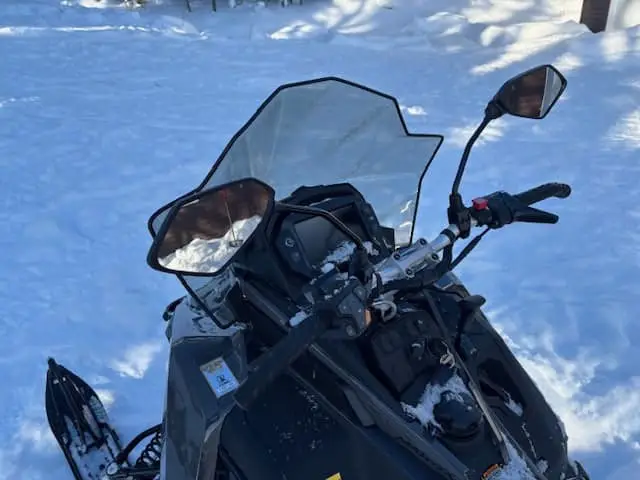
So I invested in this essential piece of equipment. For under $70, this simple add-on made my life much easier. Another must-have accessory is a left-hand throttle lever, not offered by the manufacturer. The Gold Finger* is very handy when the sled is heavily tilted to the right, and you need to pull on the handlebar while applying a bit of throttle. These affordable tweaks make the machine much more capable and off-trail-friendly.
*This type of accessory may require a period of adjustment and may not be suitable for everyone. Before installing such a modification, be sure to do your research and proceed with caution.
Conclusion
After more than 3,500 km of testing in a variety of conditions, I now have a clear picture of the Polaris 650 TITAN Adventure. Nothing’s perfect in the snowmobile world, but this model redefines the standards of versatility. Whether on trails, for work, or for fun in deep snow, this sled doesn’t just perform well—it excels.
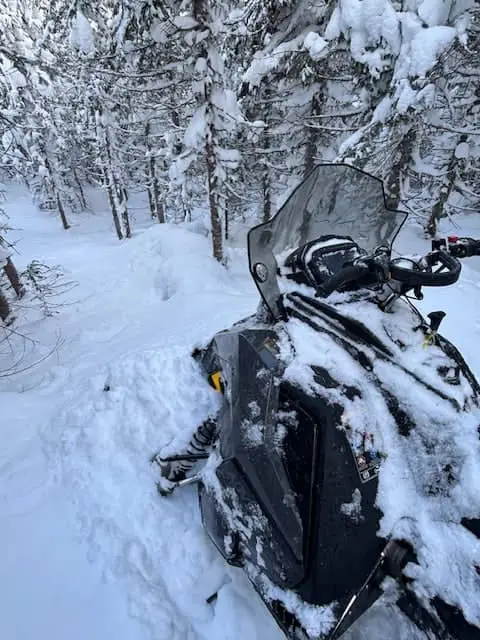
The Patriot 650 engine delivers strong power while remaining smooth and enjoyable to ride. Its fuel and oil consumption are much better than the previous generation with the 800 cc engine.
In recent years, 20 and 24 in. track snowmobiles have gained tremendous popularity, particularly in Quebec and across Canada. This new generation of TITAN puts Polaris back in a leading position in the market. It’s also further proof of the Minnesota manufacturer’s interest in the Quebec market.

